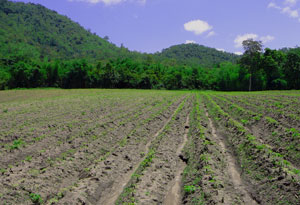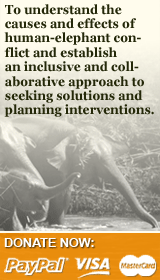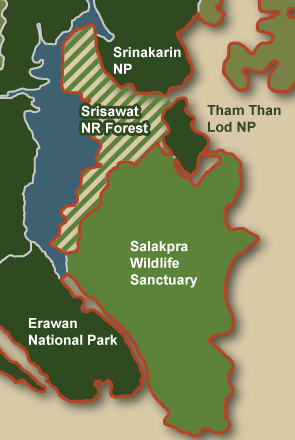Elephant Corridor Protection
 |
| Intensive vegetable agriculture in the narrow valleys of the corridor triangle |
Salakpra supports some 20% of the largest surviving population of wild elephants in Thailand, but their future is not assured. In the last 30 years, the sanctuary has shrunk so much that it is now a forest peninsula, severed from the rest of WEFCOM by the Srinakarin Reservoir, the River Kwae Yai road, ribbon development, and by human settlement and agriculture. The ecological lifeline for these elephants is a triangular tract of poorly protected reserve forest in Srisawat district (see map at left) that connects Salakpra to the Srinakarin National Park and Huai Kha Khaeng, and thereby to the world heritage core of WEFCOM. Without this forest triangle, Salakpra will become an island, crop-raiding will increase, human tolerance will diminish, and the elephants will be doomed.
In 2007, ECN worked with protected area personnel and local communities to survey this critical corridor forest and identify how best to protect it from logging, land grabbing, and unsustainable use. A report went to the government in December 2007, and because its recommendations coincide with the current policy of creating forest corridors to improve the long-term integrity of of conservation areas, they have been adopted by the Ministry of Environment and were approved by cabinet in January 2008.






